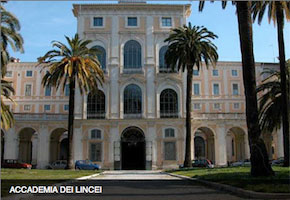Academic Events
Accademia dei Lincei
The «Accademia Nazionale dei Lincei» (National Lincean Academy), founded in 1603 by Federico Cesi and located in Rome at Palazzo Corsini, was the first academy of sciences to exist in Italy, and had Galileo among its first members. The Academy was named after the lynx, an animal whose sharp vision symbolizes the observational prowess required by science. In 1871, after the unification of Italy, the Academy became the official scientific academy of its country and has maintained this role until now, with the exception only of the years 1939-1944, when the fascist regime incorporated it into the new Italian Academy. Since 1992 the Academy has been the scientific adviser of the Italian President, who granted it his permanent high patronage.
The Academy is divided into two sections, one for physical, mathematical and natural sciences, the other for moral, historical, and philological ones, which are re-divided into various categories and sections. The Academy is composed of 540 members: in fact, every section numbers 90 ordinary Italian members, 90 foreigners and 90 corresponding members.
According to its statute, the Academy promotes, co-ordinates and diffuses knowledge and ideas in their highest expression, in order to support the unity and the universality of culture. With this aim the Academy convenes meetings and assemblies of the different classes singly or jointly, organizes congresses, conferences, national and international seminars, participates with its members in similar enterprises at home and abroad, supports research activities and missions, grants awards and fellowships, and publishes the research results.
The Academy is participating as a coorganizer in The Athens Dialogues Conference. It is especially interested in the intellectual life of the city of Athens with special regard to the transmission of the texts and the circulation of written records during the late antique and Byzantine periods.









